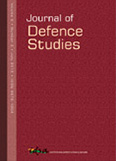Things that Modi should do in Myanmar
The Prime Minister must reach out to Myanmar in unconventional ways and remove any antipathy among the people who once, like other neighbours, had began to perceive India as a big military threat.
- P. Stobdan
- 2014 |
- IDSA Comments
- |












